During spring, aphid population growth accelerates and aphid flight activity increases, resulting in more movement and spread of aphids between crops.
At this time of year green peach aphid takes a back seat to canola aphids and turnip aphids in advanced canola, as green peach aphid tends to stick to the lower canopy and doesn’t colonise pods and stems so densely.
Unfortunately, the same can’t be said for forage brassicas in some years.
Green peach aphid in spring-sown forage brassicas can be an issue for some growers. Green peach aphid is a vector of viruses, including Turnip yellows virus (formerly Beet western yellow virus) and if present in high numbers, their feeding can directly damage young plants.
Chemical control options are very limited for control of green peach aphid in forage brassicas due to the evolution of insecticide resistance and very few registered chemistries in this crop.
The good news is that beneficial predators and parasitoids are plentiful in spring, especially those that are transient and can fly between crops hunting down aphid populations.
Here are four key predators and natural enemies of aphids to look out for in forage brassicas close to aphid colonies:
1. Parasitoid wasps (& aphid mummies)
An aphid mummy occurs when a parasitic wasp deposits an egg inside the body of an aphid with a piercing, tube-like appendage known as an ‘ovipositor’. A grub-like wasp larva hatches from the egg and eats the aphid from the inside. Eventually the outside of the aphid host takes on a bloated, swollen golden or bronzed appearance. The wasp completes its development inside the aphid host, emerging as a winged adult through a hole cut away from the aphid shell.
Keep in mind that when an aphid host takes on the typical aphid mummy appearance, wasp development is almost complete. The level of parasitism in a crop may be higher than what can be seen by eye.

2. Ladybird beetles
There are several species of ladybird beetle that gobble down aphids as larvae and as adults.
As well as looking out for the active stages, you may also spot their football-shaped eggs strategically laid close to aphid colonies.
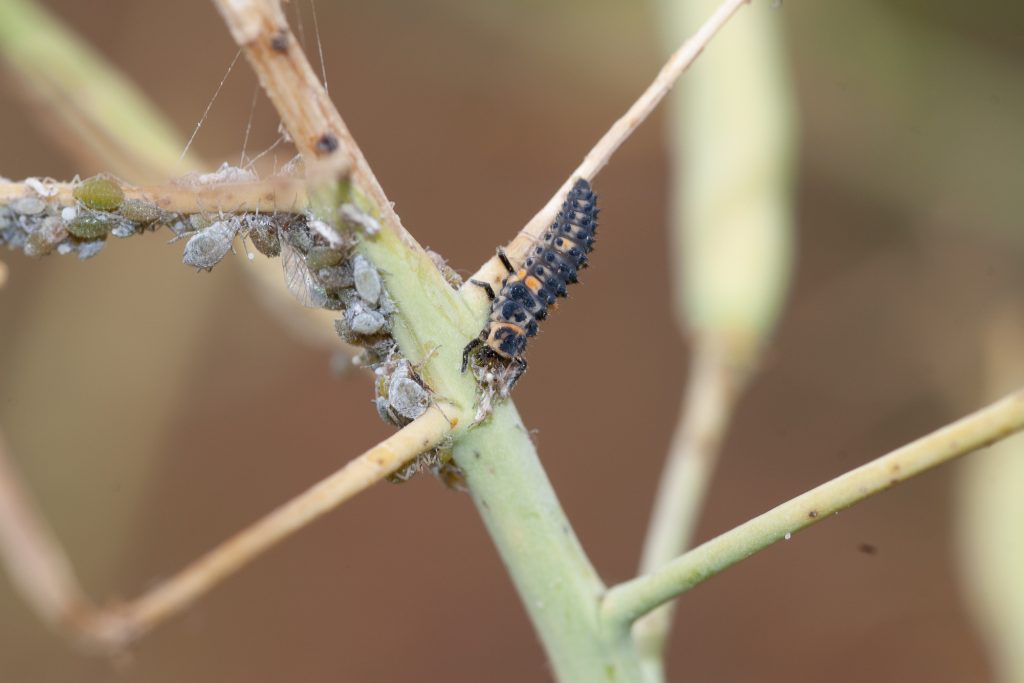
Photo by Andrew Weeks, Cesar Australia 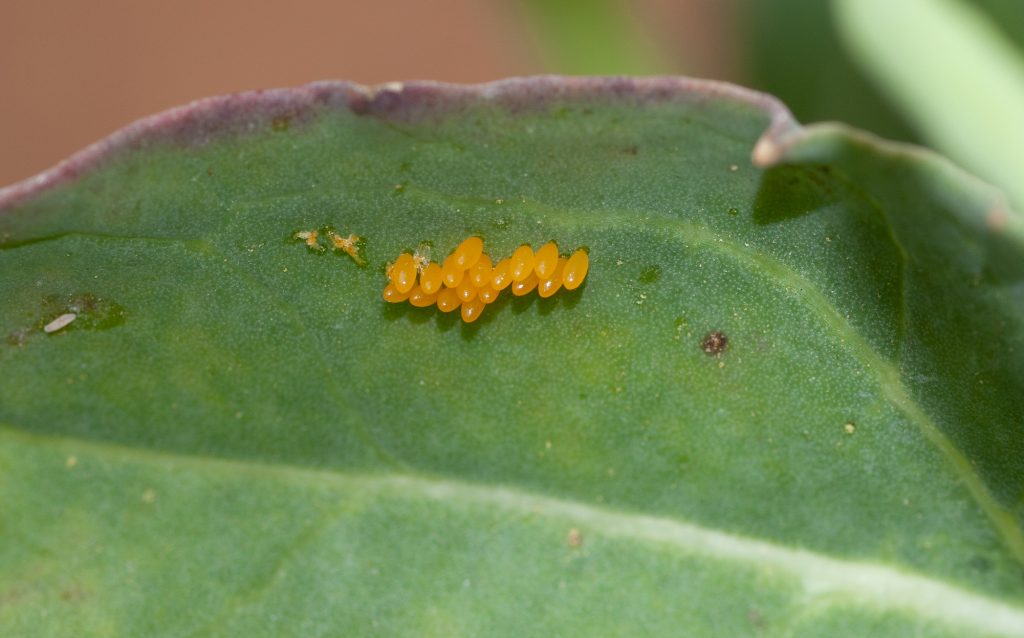
Photo by Andrew Weeks, Cesar Australia
3. Lacewings
There are two main families of lacewings found in crops: brown lacewing and green lacewings.
Brown lacewings are predaceous as both larvae and adults.
Green lacewings are thought to be mostly predaceous as larvae.
Lacewings are quirky little critters. Especially the green lacewing larvae, which busily impale debris and their victim’s corpses on their backs (so they may be hard to spot).
It’s also not uncommon to find green lacewing eggs close to aphid colonies. Look out for a single elliptical egg laid on a long thin stalk.
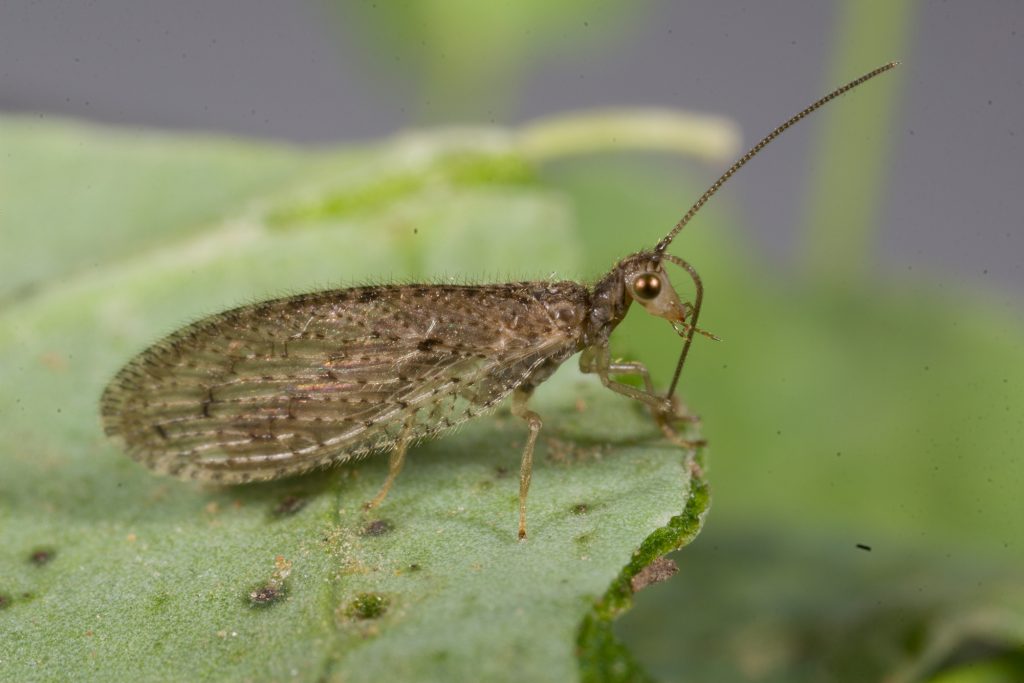
Photo by Andrew Weeks, Cesar Australia 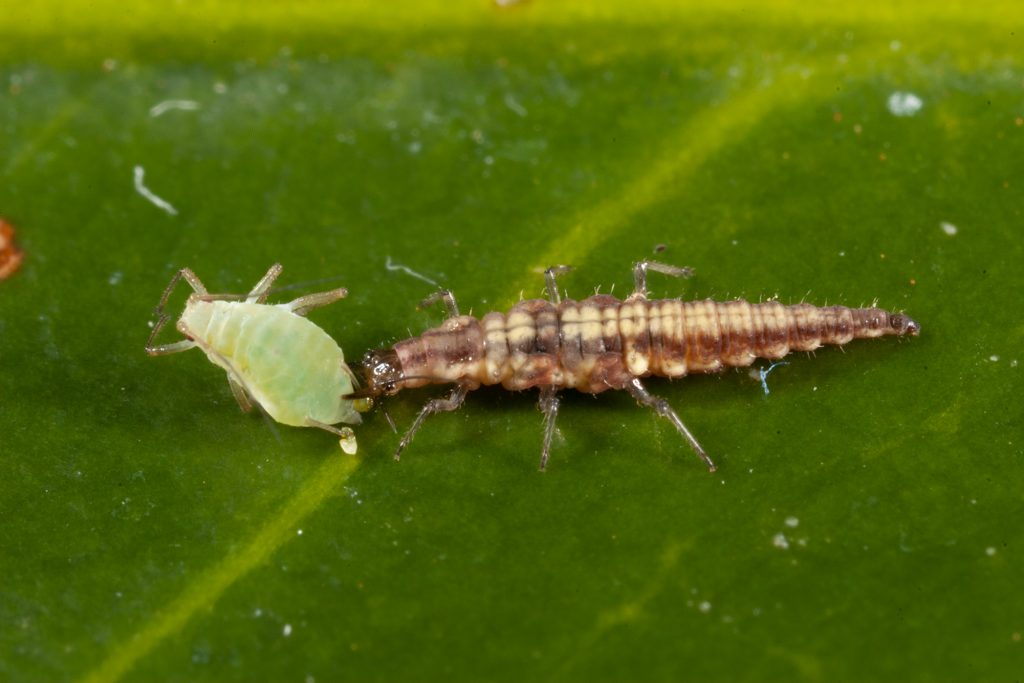
Photo by Andrew Weeks, Cesar Australia
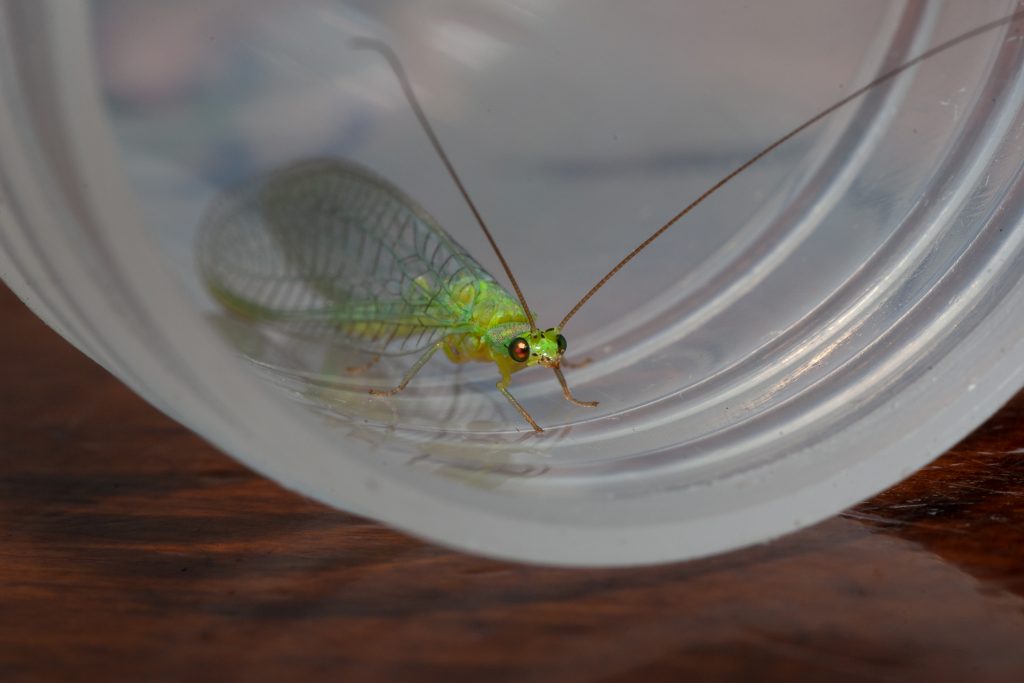
Photo by Andrew Weeks, Cesar Australia 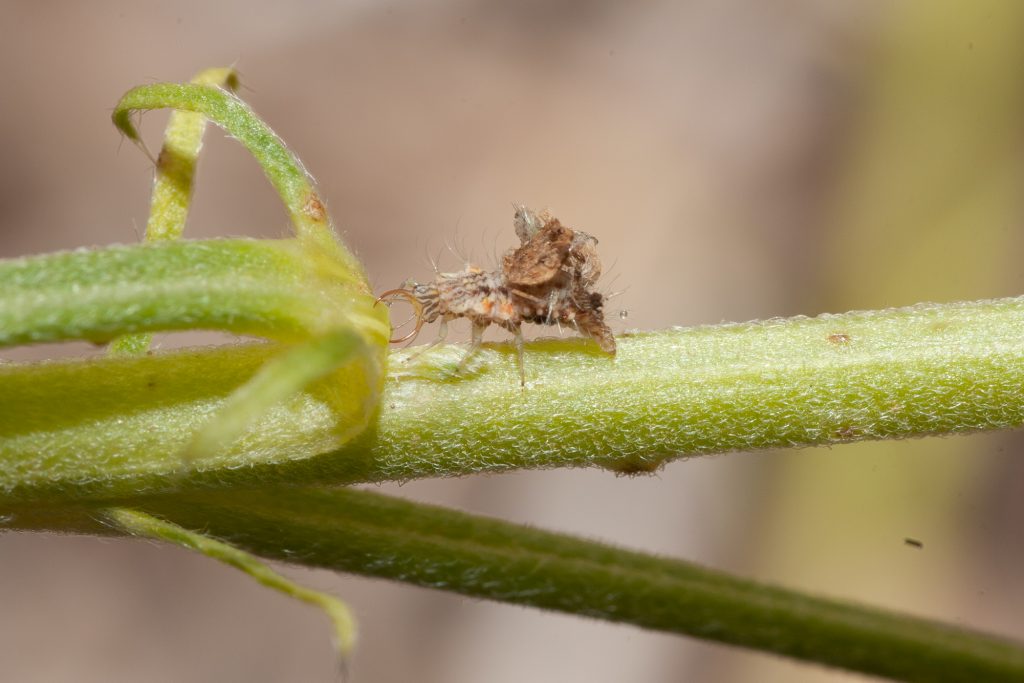
Photo by Andrew Weeks, Cesar Australia
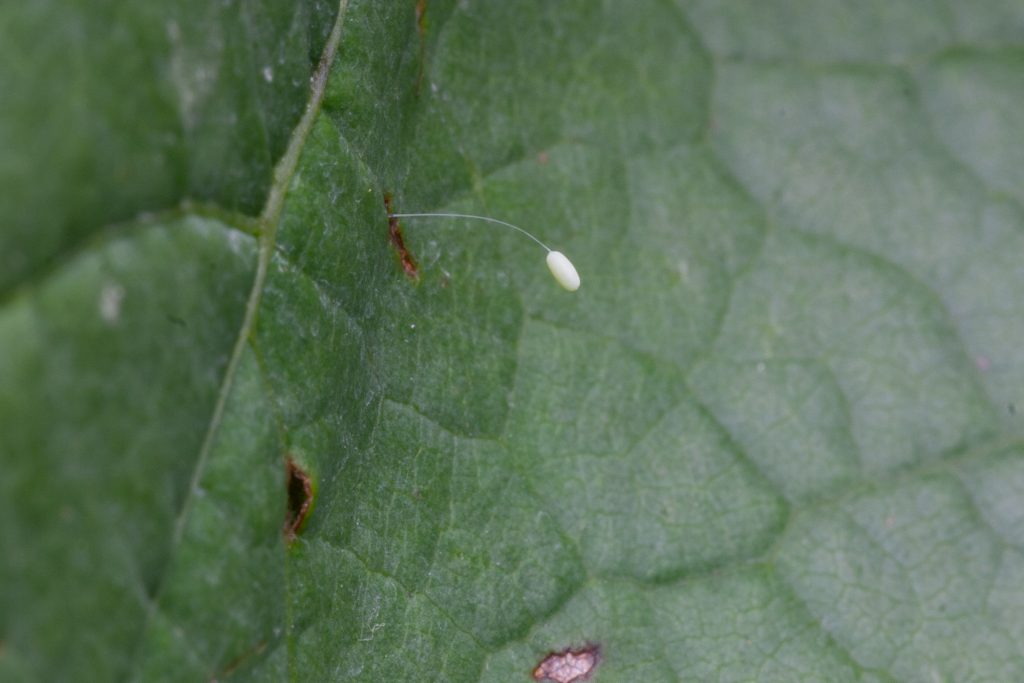
4. Hoverflies
Hoverfly larvae love sinking their ‘teeth’ into aphids. At first sight these legless, headless green grubs seem placid, but pay close attention and you will see it snatch up an unsuspecting aphid.
Hoverfly adults are not predacious, but their activity infield is a good sign that their voracious larvae are also about. You may need to look closely for hoverfly larvae, which are bright green and may blend into the aphid colony or plant.
The adults may be mistaken for bees or wasps. Hoverfly adults can be distinguished from bees and wasps by having only one set of wings instead of two and also by their ‘hovering’ behaviour when flying.
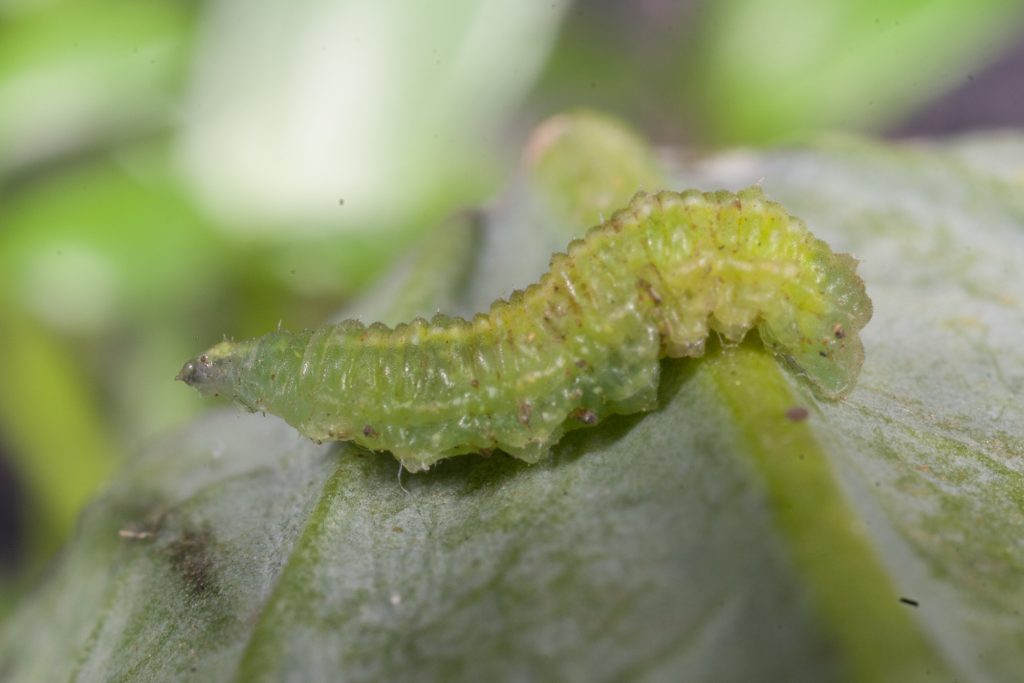
Photo by Andrew Weeks, Cesar Australia 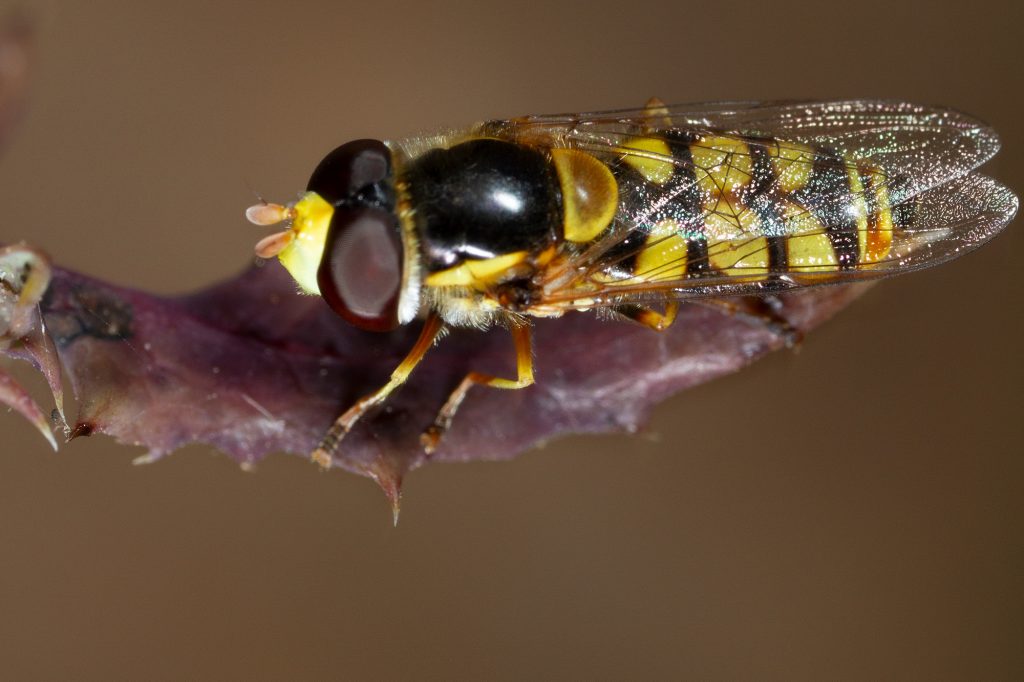
Photo by Andrew Weeks, Cesar Australia
Acknowledgements
Field reports
Rylie Cherrey – Elders (South West VIC)
Josh Brown – McDonald Rural (South West VIC)
Cover image: Wingless green peach aphid adult. Photo by Julia Severi, Cesar Australia





